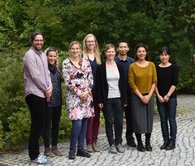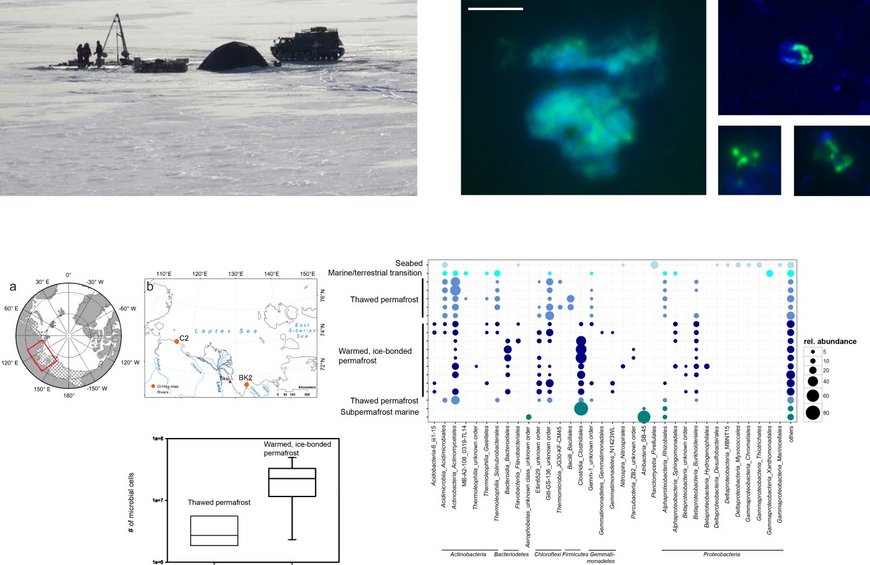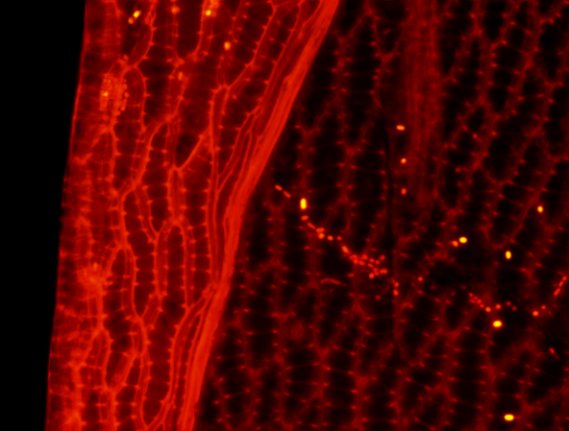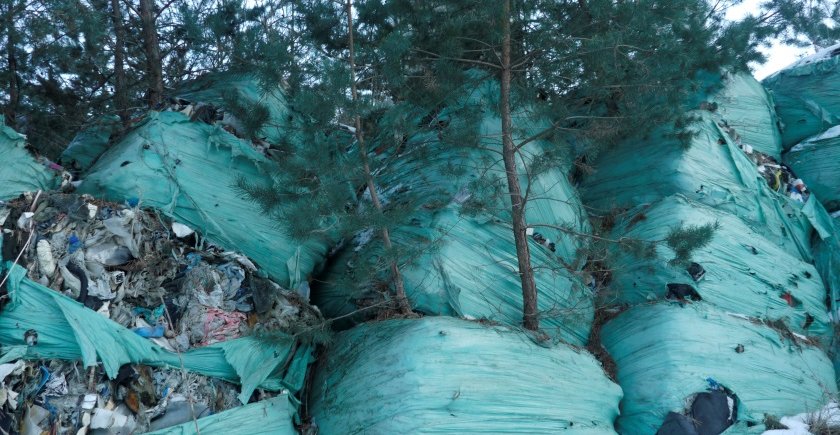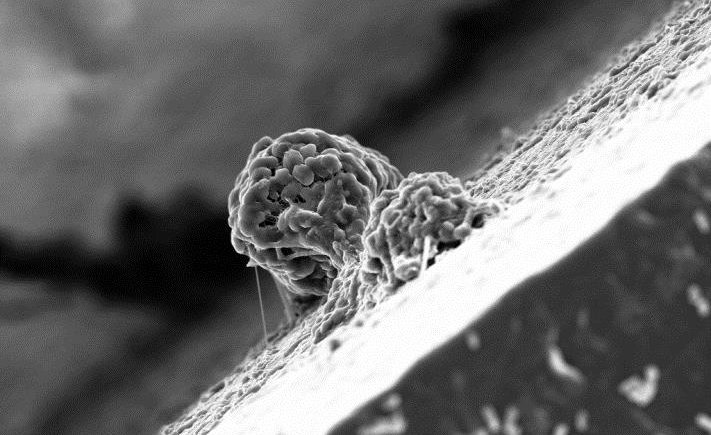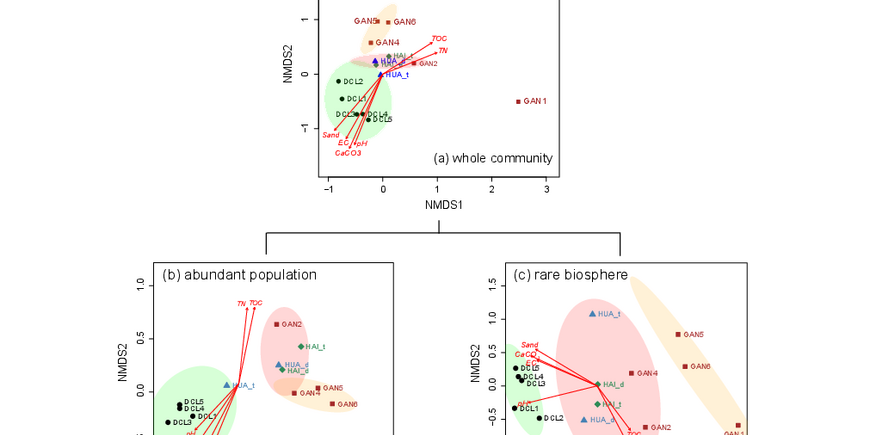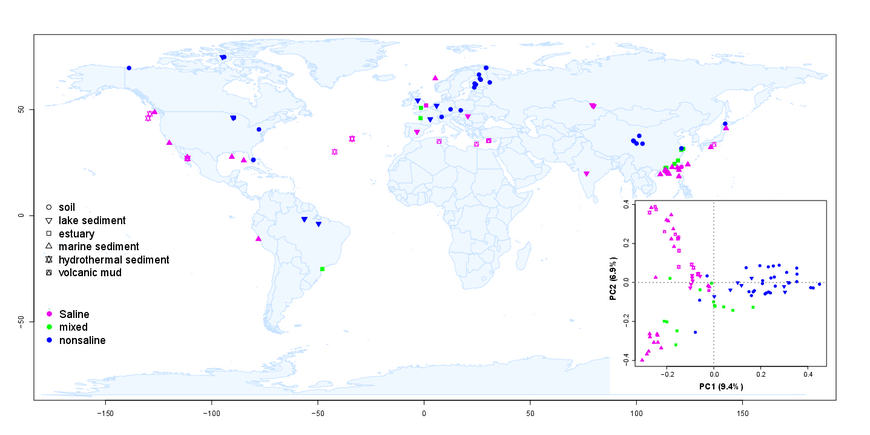MicroCene "Mikrobielle Gemeinschaften des terrestrischen Untergrunds"
Die 2013 gegründete Helmholtz-Nachwuchsgruppe „MicroCene“ gewährt einen Einblick in die mikrobiellen Prozesse und Verbreitungsmuster des terrestrischen, kohlenstoffreichen Untergrunds von Permafrost und Moorstandorten. Wir nutzen molekulare Methoden der Hochdurchsatzsequenzierung, Metagenomik, Bioinformatik und Statistik in Kombination mit physiologischen und biogeochemischen Verfahren und charakterisieren die aktiv am Kohlenstoffkreislauf beteiligten Mikroorganismen, um deren Bedeutung für oberflächennahe Flüsse der Klima wirksamen Gase Methan und CO2 abzuschätzen. MicroCene arbeitet zirkumarktisch und in Standorten des TERENO Observatoriums Nordostdeutsches Tiefland .
Laufzeit: 2013 - 2020
Zuwendungsgeber: „Impuls- und Vernetzungsfonds” der Helmholtz Gemeinschaft
Kooperationspartner: Alfred Wegener Institute - Helmholtz Centre for Polar and Marine Research, Universität Hamburg, Arctic University of Norway University of Fairbanks, Alaska
Arbeitsgruppenleiterin: Prof. Susanne Liebner
PostdoktorandInnen: Dr. Matthias Winkel, Dr. Sizhong Yang
DoktorandInnen: Andrea Kiss, Julia Mitzscherling, Wen Xi
MasterstudentInnen: Joana MacLean
Technische Assistenz: Anke Saborowski
Ausgewählte Publikationen:
Knoblauch, C., Beer, C., Liebner, S., Grigoriev, M., Pfeiffer, E.-M. (2018). Methane production as key to the greenhouse gas budget of thawing permafrost. Nat Clim Change, doi: 10.1038/s41558-018-0095-z
Winkel, M., Mitzscherling, J., Overduin, P.P., Horn, F., Winterfeld, M., Rijkers, R., Grigoriev, M.N., Knobleuch, C., Mangelsdorf, K., Wagner, D., Liebner, S., 2018. Anaerobic methanotrophic communities thrive in deep submarine permafrost. Scientific Reports 8 (1291). DOI: https://www.nature.com/articles/s41598-018-19505-9
Overduin, P.P., Liebener, S., Knoblauch, C., Günther, F., Wetterich, S., Schirrmeister, L., Hubberten, H.-W-, Grigoriev, M.N., 2015. Methane oxidation following submarine permafrost degradation: Measurements from a central Laptev Sea shelf borehole. Journal of Geophysical Research Biogeosciences. DOI: http://dx.doi.org/10.1002/2014JG002862
Mitzscherling, J., Winkel, M., Winterfeld, M., Horn, F., Yang, S., Grigoriev, M.N., Wagner, D., Overduin, P.P., Liebner, S., 2017. The development of permafrost bacterial communities under submarine conditions. Journal of Geophysical Research Biogeosciences. DOI: https://agupubs.onlinelibrary.wiley.com/doi/abs/10.1002/2017JG003859
Wen, X., Yang, S., Horn, F., Winkel, M., Wagner, D., Liebner, S., 2017. Global biogeographic analysis of methanogenic archaea identifies community-shaping environmental factors of natural environments. Frontiers in Microbiology. DOI: https://doi.org/10.3389/fmicb.2017.01339
Eos Research Spotlight: Microbes may thrive in subsea permafrost long after flooding
Forschung
- We map microbial communities of the terrestrial subsurface shown here at the example of submarine permafrost. Thawing submarine permafrost is reported to be a hot spot of methane to the atmosphere. We, however, identified anaerobic methanotrophic consortia at the permafrost thaw front mitigating the emission of methane in this system. The top-right picture shows micrographs of ANME-2a consortia at the SMTZ of submarine permafrost obtained through CARD-FISH. We also found indications for proliferation of bacteria residing in the warmed permafrost.
- As part of a CSC fellowship on the biogeography of methane producing archaea we have identified salinity as global driver of methanogenic community composition.
- The rare biosphere, the low-abundant microbial populations, is suggested to be a conserved way of microbial life. We conducted a molecular survey of rare methanogenic archaea, representing a single functional guild, in the environment targeting the mcrA gene in order to test if general concepts associated with the structure of the rare bacterial biosphere also apply to single functional groups. Similar to what is known about rare bacterial communities, the overall contribution of rare methanogens to the alpha diversity is much larger than to Bray-Curtis measures. Moreover, a similar core group of methanogens harbored by the abundant and rare communities suggests similar sources and environmental controls of both groups.
- Natural peatlands form where special environmental conditions favour the establishment of the moss family Amblystegiaceae, and the succession into Sphagnaceae peatlands. One third of the global soil organic carbon and ten percent of the global freshwater resources are stored in peatlands. Despite their importance for the carbon and nitrogen cycling, we know very little about the ecology of peat moss associated microbial communities, and a systematic study unveiling the microbiota and its drivers in both Amblystegiaceae and Sphagnaceae peatlands is lacking. Filling this gap is part of the International Helmholtz Research Group ArcBiont .
- The “Plastisphere” is a result of mankind. Plastic has a long life time and is cheap to be produced so that littering, the improper deposition of waste products at an inappropriate location, has grown into a severe problem of our society. In a pilot study we characterize terrestrial litter as a habitat of the Anthropocene. The “plastisphere” is colonized by a special biota with a reduced diversity and consisting of members of soil crusts and potential plastic degraders.

